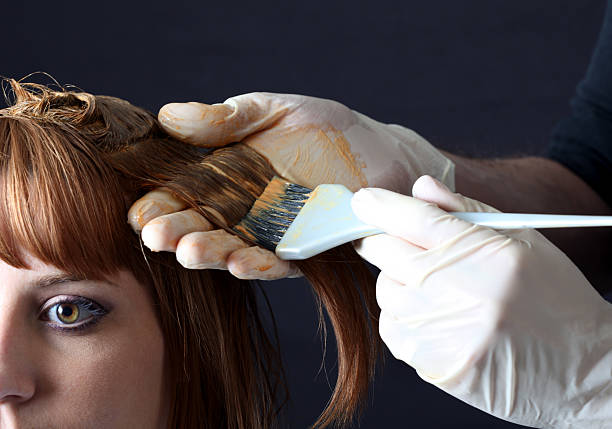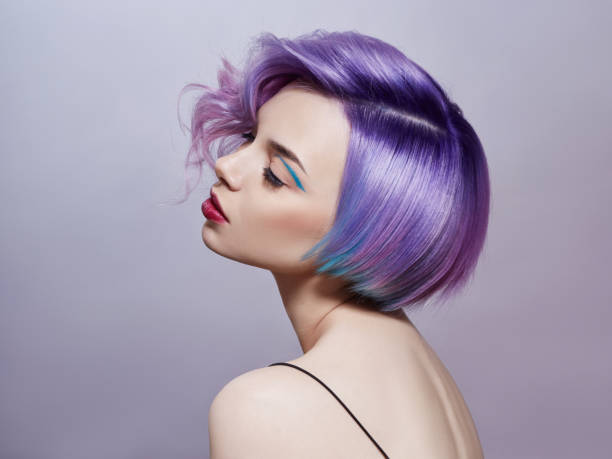Hair coloring is a popular means of changing one’s looks and style. Whether you are looking to cover grays or want an entirely new hair color, the process can be both exciting and daunting. One question that often arises for many individuals is whether they can dye wet hair.
In this article, we will explore this topic in detail and provide all the information you need to know before deciding to dye your hair while it is still wet.
Can You Dye Wet Hair?
It is generally recommended to dye hair dry rather than wet. When hair is wet, it’s more challenging for the dye to penetrate the hair shaft effectively. The excess moisture saturating the hair can dilute the hair dye mixture, potentially making it less potent and less likely to achieve the desired color. Additionally, wet hair can absorb dye unevenly, resulting in a patchy or inconsistent color outcome that may not meet your expectations. To ensure a successful and even hair coloring process, it’s advisable to work with dry or slightly damp hair, as recommended by most hair dye manufacturers.
For the best results and to avoid any potential hair damage or undesirable color variations, follow the specific instructions provided with your chosen hair dye product. These guidelines typically include information on application techniques, timing, and whether your hair should be dry or damp during the dyeing process.
What Type of Hair Coloring Works Best on Wet Hair?
Demi-permanent and semi-permanent hair dyes, known for their temporary color effects, are most suitable for application on wet hair since they lack ammonia. This characteristic allows them to coat the hair cuticle without absorption, resulting in a wash-out period of approximately eight washes.
In contrast, permanent hair dyes contain ammonia, which opens the hair cuticle, enabling the dye to permeate the hair shaft. Therefore, it is not advisable to use permanent dye on wet hair, as this may lead to uneven distribution and less vibrant coloration due to the absence of the hair cuticle’s natural state.
Should You dye your hair wet or dry?
Now that we have looked at the process of dyeing wet hair and some examples of when it might be appropriate, let’s explore whether dyeing wet hair is safe and effective. Here are some comparisons between dying wet and dry hair:
Effectiveness
Dyeing dry hair is generally more effective in achieving the desired color outcome. It allows for better color absorption, resulting in more vibrant and long-lasting results. Dyeing wet hair can be less effective as excess moisture can dilute the hair dye mixture. This dilution may lead to less intense coloration and may require longer processing times to achieve the desired shade
Safety
When your hair is wet, it is more prone to damage from the chemicals in the hair dye. Additionally, if the hair dye drips onto your skin while your hair is wet, it can cause irritation or burns. Therefore, it is important to take extra precautions when dyeing wet hair to avoid any potential damage.
Convenience
Dyeing dry hair is more convenient for most people as it follows the standard procedure recommended by hair dye manufacturers. It requires minimal preparation, such as towel-drying the hair after washing it, and follows a well-established process.
How to Dye Wet Hair?
Ultimately, the decision of whether or not to dye wet hair is a personal one. If you are concerned about the potential for damage, it is best to dye your hair dry. However, if you are willing to take the necessary precautions, you can dye your hair wet without causing any major damage. Here are some steps to follow:
- Wash your hair with a clarifying shampoo. This will help to remove any product build-up that could prevent the dye from penetrating the hair shaft.
- Towel dry your hair until it is damp. Do not overdry your hair, as this can make it more difficult to apply the dye evenly.
- Put on the gloves. Pour the hair dye into the mixing bowl.
- Apply the dye to your hair, starting at the roots and working your way down to the ends. Be sure to apply the dye evenly.
- Put on the shower cap. Let the dye sit for the amount of time specified on the package.
- Rinse the dye out of your hair with cool water.
- Apply a conditioner to help seal in the color.
Here are some additional tips for dyeing your hair wet:
- If you are dyeing your hair a darker color, you may need to apply the dye twice to get the desired results.
- If you are dyeing your hair a lighter color, it is important to test the dye on a small section of your hair first to make sure that it does not turn out too light.
- Be careful not to get the dye on your skin, as it can cause irritation.
- If you do get the dye on your skin, wash it off immediately with soap and water.
FAQs
- What happens if I dye my hair when it’s too wet? Dyeing hair when it’s excessively wet can dilute the hair dye mixture, leading to uneven or less vibrant color results. It may also impact the dye’s ability to adhere to the hair cuticle, affecting longevity.
- Are there any specific hair types that can be dyed when wet? While some people choose to apply temporary dyes to wet hair, it’s generally not recommended for any hair type. Hair dye products are formulated for dry or slightly damp hair to ensure consistent and predictable results.
- Can wet hair affect the hair dye’s processing time? Yes, wet hair may affect the processing time of hair dye. Dyeing wet hair can alter the timing specified in the product instructions, potentially leading to color variations or inconsistencies.
- Should I dye my hair when it’s freshly washed or slightly dirty? It’s often recommended to dye hair that is slightly dirty or hasn’t been washed immediately before coloring. Natural oils and a bit of dirt or product buildup can help protect the scalp and reduce irritation during the dyeing process.
Final Takeaway
So, can you dye wet hair? The answer is yes, you can dye your hair while it is still damp, but you need to take extra precautions to ensure that the process is safe and effective. If you are short on time or prefer to maintain your curls, dyeing your hair while it is wet can be a convenient option. However, if you are concerned about potential damage or irritation, it may be best to wait until your hair is dry before dyeing it. Whatever method you choose, make sure to follow the instructions carefully and take all necessary precautions to ensure that your hair looks its best.




